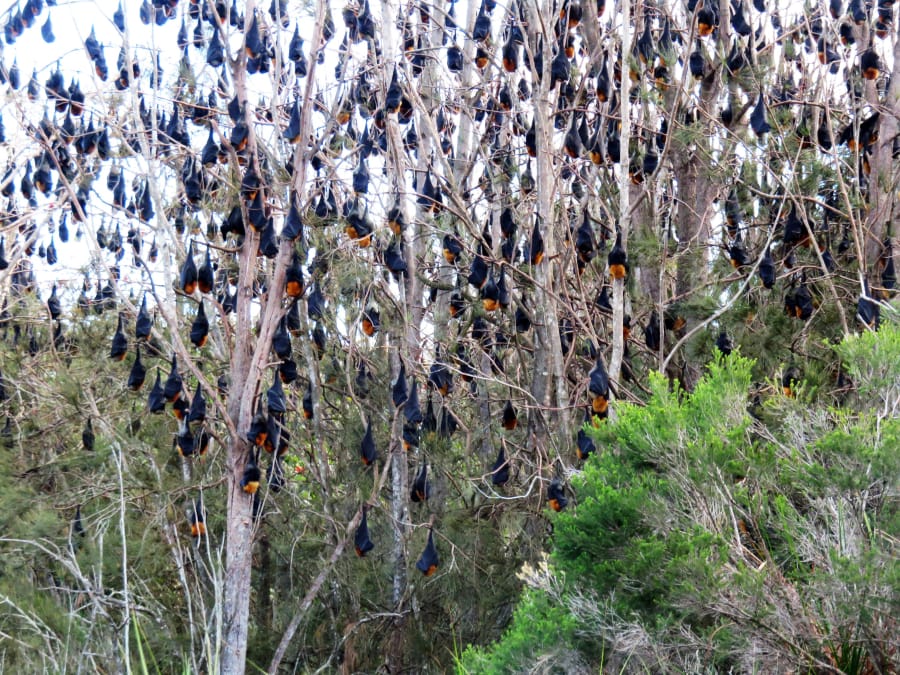CANBERRA, Australia — Batemans Bay is a picturesque coastal town that always leaves the welcome mat out for tourists. But tens of thousands of visitors of another kind have more than outstayed their welcome — large bats.
Residents feel trapped in their guano-coated houses, and those who venture outside soon feel a disgusting “sprinkle of something.” Then there’s the early-morning screeching, so excruciating that Danielle Smith said it compelled her to go on antidepressants.
Her 2-year-old can no longer play in the backyard, and “won’t even sleep in his own bed anymore because he’s so frightened of the bats,” she said.
“I can’t open my window at all because the smell is so bad,” Smith said.
The area’s population of the gray-headed flying fox, Australia’s largest bat, peaked at up to 140,000 in April — nearly three times the number seen there last year. That’s about 12 bats for each of the 11,000 human residents of Batemans Bay, a tourist destination 95 miles southeast of Canberra.
Civic leaders agree the stinking, noisy, messy and potentially diseased bats have got to go. The local council is considering methods of driving them away. But getting rid of the protected native species, which is listed as vulnerable to extinction because of habitat loss, is no simple task. Some experts warn against even trying.
“It’s an unprecedented event because we’re in uncharted territory with how to manage it,” Mayor Lindsay Brown said.
The Commonwealth Scientific and Industrial Research Organization estimates there are 680,000 gray-headed flying foxes in Australia, meaning Batesmans Bay has been home to one in every five of them. Each bat weighs about 2 pounds, 3 ounces. Their wing spans can exceed 3 feet. They fly out at dusk to feed on flowering spotted gum and bloodwood trees in forests, then wake locals with a cacophony of screeching on their return to town before dawn.
Thousands flew en masse into power lines, knocking out power to the entire town. It happened not once, not twice, but on nine consecutive nights in April.
Their acidic droppings can burn through paint on cars if not washed off within hours. The pungent scent that the males use to mark out their roosting territory is sickening. A bite or a scratch from a bat carries the risk of the rabies-like lyssavirus.
The bats have been returning to this habitat annually since 2012, making their home in an urban wetland known as Water Gardens and a nearby golf club. But this year’s numbers are unprecedented: Last year there were only 50,000.
Bat colonies in Australian urban areas have become increasingly common since the 1990s, Sydney University bat researcher Kerryn Parry-Jones said.
“We don’t really know why there is this urbanization,” she said. “It is a bad thing for everybody, including the bats. But it’s probably concerned with habitat destruction.”
While thousands of bats have already migrated north, Mayor Brown wants the remainder “nudged” out of town in hopes they won’t return to Batemans Bay next year.
The Eurobodalla Shire Council’s plight has recently attracted a 2.5 million Australian dollar ($2 million) state government grant to get rid of the bats. The federal government has given the council an exemption from environmental protection law to disperse the bats without killing them.
The council is removing trees to create a “habitat buffer” between the colony and homes, Brown said.
Other ideas to drive away the remaining bats include disrupting their roosting through smoke machines, loud noise booming from powerful speakers and bright lights before dawn.



